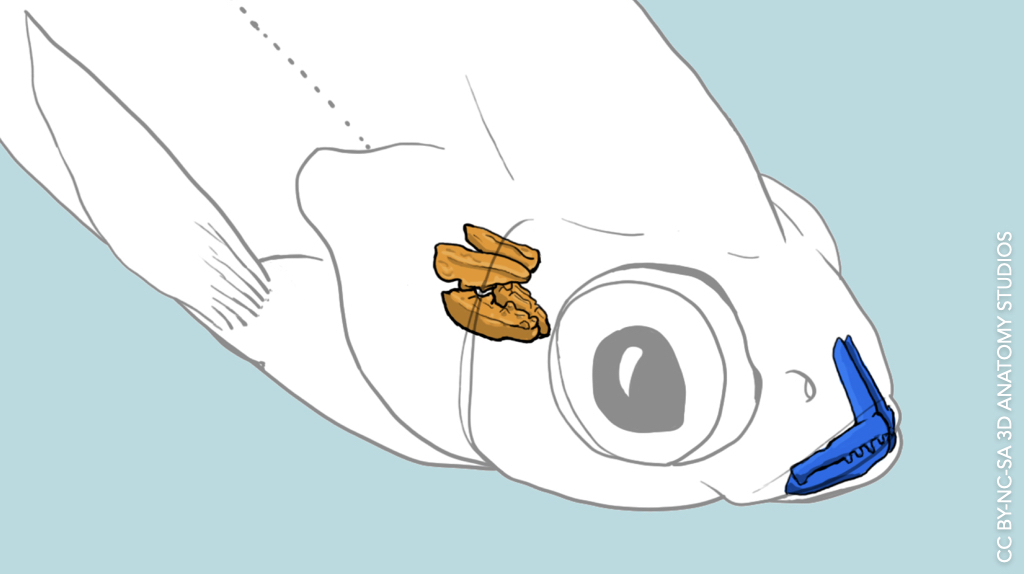The next time you’re eating, take a moment to consider all of the ways that you’re using your upper and lower teeth. If you’re eating an apple, for example, you’ll use your front teeth (incisors) to cut a piece of the apple. You’ll then use your tongue to move the piece of apple further back in your mouth where you’ll crush it into small pieces using your back teeth (premolars and molars). During this process of chewing (mastication), your tongue and back teeth will be working together moving the apple around in your mouth until the pieces are small enough for you to safely swallow.
Now imagine that you’re a fish and you have to do all of this underwater. You’d have the same challenge of taking a large piece of food and breaking it down into smaller pieces for swallowing, but in addition to this challenge, the pieces of food would be continuously trying to float out of your mouth and away from you. You could keep your mouth closed as you chew, but if you’re a typical fish you don’t have large lips that allow you to chew while keeping your mouth sealed. Plus, if you were a fish you’d need to keep bringing freshwater into their mouth to breathe.
3D Anatomy Studios member Michael Fath created this illustration to show one of the fascinating adaptations in fishes that allows them to process food without losing their lunch. Many fish have evolved a second set of jaws (called the pharyngeal jaws) further back in their throat, in addition to their front jaws (called the oral jaws). This second set of jaws, evolved from the modified gill skeleton, allows fish to process food further back in their mouth minimizing the chance that the food escapes from their mouth (and ends up getting snatched by a hungry neighbor). This additional set of jaws has also allowed fish to specialize each set of jaws for a different type of process: typically the oral jaws are used to capture, cut, or pry food items while the pharyngeal jaws are used to crush and chew them.
While many groups of fish have this double set of jaws, Michael chose to illustrate them in a juvenile bluegill sunfish (Lepomis macrochirus) because this is one of the species he has worked on for his PhD research. Michael researches how fish swim, particularly in response to perturbations. As a part of that research, he obtained a high resolution CT scan of the bluegill that allowed him to visualize the two sets of jaws and create this illustration.
Illustrated by: Michael Fath, MS
Software used: Adobe Illustrator
License: CC BY-NC-SA 3D Anatomy Studios


